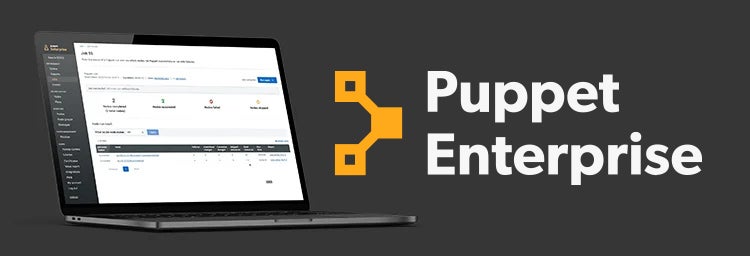Blog
August 2, 2023
Security Automation Tools: SIEM, SOAR, IAM, Configuration Management + More Tools to Ensure IT Security
Security & Compliance,
Infrastructure Automation
Security automation tools should be the first step in preventing IT fires like cyberattacks that occur as a result of misconfiguration and drift. Security automation tools like breach detection, pentesting, and compliance enforcement let your team spend more time tackling bigger, more valuable goals and less time putting out fires.
Let’s explore some security automation tools to use in your enterprise and how security automation can make your IT fireproof.
What are Security Automation Tools?
Security automation tools are pieces of software that automatically perform a range of IT security tasks so humans don’t have to. Security automation tools can perform breach detection, response, testing, compliance enforcement, and more.
Security automation tools are used to move manual IT security tasks out of human hands. That helps reduce error, ensure consistency in security policy enforcement, and free up valuable time and human effort for more important tasks.
📋 Compare agent vs. agentless to see how they stack up for secure infrastructure automation >>
Automation, orchestration, and developer self-service can help IT operations teams avoid, preempt, and respond to potential security and compliance issues. Continuous security is a huge win for IT teams who are passionate about automation for security outcomes. As companies continue to do more with less, they look for automation and integration options to support the work that they do. The efficiency and consistency that IT ops gains from using security automation tools is a victory for not just the security team, but the entire organization.
Back to topSecurity Automation Tools to Know
Types of security automation tools include SIEM, SOAR, vulnerability management, compliance management, penetration testing, and others.
Naturally, no one security automation tool can do everything from incident reporting to endpoint protection and managing compliance. True enterprise security comes from a strategic combination of many tools that have different uses (and smart security automation that ties them all together).
The list of security automation tools is long, but here are a few examples of the most common types and examples of each.
Security Automation Tool | What It Does | Examples |
Security Information and Event Management (SIEM) Tools | SIEM tools automatically can collect and organize data from security events that occur within IT infrastructure. That gives teams real-time visibility into incidents and threats so teams can respond to them more quickly and effectively. |
|
Security Orchestration, Automation, and Response (SOAR) Tools | SOAR tools automate response to security incidents to streamline security processes and workflows. They can also integrate with other security tools and APIs to gather more info on security events and even take action to respond to incidents. |
|
Vulnerability Management Tools | Vulnerability management tools can automate tasks that surface vulnerabilities in IT infrastructure and assets. These tools are often used to scan for potential vulnerabilities in software, systems, and configurations, though some can also remediate those vulnerabilities. |
|
Security Configuration Management Tools | Using configuration management tools for security lets you establish secure baseline configurations, assess actual vs. desired configurations, monitor configurations, and enforce secure configurations. | |
Security Policy and Compliance Tools | Security policy and compliance tools help establish security policy as code to meet internal requirements (inside the company) or external requirements (from regulatory or industry organizations). Some tools can then enforce them continuously and help monitor and report on adherence to policy over time. |
|
Identity and Access Management (IAM) Tools | IAM tools make sure that only individuals authorized to access certain resources and data are able to access it. IAM can automate security functions like identity verification, SSO, RBAC, zero-trust security, and more. |
|
Security Assessment and Penetration Testing Tools | Penetration testing tools (also known as pentesting tools) can simulate real cyberattacks (like password cracking and app testing) in a private, controlled environment to help security teams find out how effective their security controls really are. |
|
How Security Automation Tools Make IT Teams More Proactive
When IT teams don’t use security automation tools, they struggle with common and time-consuming security frustrations. Those can include:
- Out-of-band patching, which can be manual and slow when critical vulnerabilities arise
- Time-consuming, manual, repetitive analysis when security incidents occur
- Lack of collaboration with other stakeholder teams, which delays detection and response
From our State of DevOps reports over the years, we’ve learned that teams that have made the most improvement in their security practices use security automation tools and integrations. The time they earn back lets them find more areas in their workflow to automate, integrate, and add self-service capabilities.
Of course, just automating tasks can’t solve your entire security problem. Defining your desired compliance, aligning with that desired state, and getting everyone on the same page are essential to maintaining a strong security posture. That can be hard for two distinct reasons:
- Different teams have different priorities, even within the same company, making it hard to work on security cross-functionally with different stakeholders.
- Interpreting the latest security regulations and frameworks, and choosing which ones are necessary to maintain your security posture, takes time and effort.
Learn how to break down siloes for better enterprise security in our free, ungated eBook: “Fostering a culture of joint accountability for IT, security, and compliance across an organization”
Back to topHow to Manage IT Security with Puppet Security Automation Tools
There are many ways in which automation can be used to support an organization’s IT security objectives. Infrastructure automation tools like Puppet Enterprise, combined with its premium extensions for compliance, promote effective IT security management by enforcing secure and compliant configurations, automating patching, and more.
There is a large overlap between the use cases that Puppet supports and the provisions of common security frameworks like NIST CSF and CIS Controls, and others like PCI DSS, ISO 27001, etc. Each of these frameworks and regulations includes requirements for secure and compliant configurations, vulnerability management, and patch management.
Here are a few ways Puppet supports secure, compliant infrastructure.
Problem: Compliance Becomes Too Complicated to Enforce at Scale
Self-enforcing security tools like Puppet Security Compliance Enforcement offer teams a turnkey solution to maintain secure configurations. This means that standardization and conformity are delivered to the scale of your organization, with custom exceptions and more capabilities to meet your needs.
One of the reasons compliance becomes so convoluted for enterprise IT is because there are numerous security frameworks to comply with. Some are more general (like CIS Controls, NIST CSF, and ISO 27001) and some that are more specific to industry verticals, or regions (like HIPAA in the USA or GDPR and NIS2 in the EU). Organizations often need to comply with more than one regulation and implement a secure configuration baseline that satisfies each.
In the face of this complicated web of compliance, it’s good practice to establish a secure baseline with one common control standard. CIS Benchmarks are a great starting point for almost any enterprise because many frameworks, including PCI DSS, FISMA, FedRAMP, and more already reference the secure configuration standards in CIS Benchmarks. Additionally, DISA STIGs cover a lot of compliance ground for organizations that work with the US Federal government.
Solution: Puppet Automates Compliant Configurations, Even in Complex Infrastructure
Security Compliance Enforcement can automatically enforce configurations in your infrastructure that are compliant with CIS Benchmarks and DISA STIGs. With Security Compliance Enforcement, Puppet alleviates the burden of managing compliance from IT operations teams. Security Compliance Enforcement also incorporates the latest benchmark versions and consistently adds content for new operating systems — which can amount to hundreds of pages of new baseline configuration content with each update.
Want Automatic CIS and DISA STIG Compliance Enforcement?Get a demo of Puppet Enterprise and Security Compliance Enforcement to find out how much time and effort you can save on compliance. |  |
Problem: Audits Take Too Much Time + Effort
Getting ready for an audit is a tedious task that can bog down an entire team for weeks. It means understanding complex audit requirements, running assessments, hunting down documentation that might not exist, implementing new controls, and creating a plan to remediate and maintain compliance.
Continuous compliance visibility and auditor-friendly code saves time when it comes to audits. It shifts all of those tasks left – monitoring compliance, remediating drift, logging events, and enforcing compliant configurations – so that when auditors come knocking, your team has everything they need to evaluate compliance in your IT infrastructure. It also benefits IT ops teams day-to-day by reducing knee-jerk reactions and misconfigurations that can come with word of an audit
Solution: Puppet Automates Audit Readiness Tasks
The combination of Puppet Enterprise and our premium extensions helps you get ready for audits quickly – and stay ready for audits constantly.
Security Compliance Management is a console in Puppet Enterprise that allows you to quickly assess IT infrastructure and determine your compliance status. With Security Compliance Management, you can evaluate compliance with CIS Benchmarks and DISA STIGs, manage policy exceptions, and report on changes to your compliance status, down to the node level.
Security Compliance Enforcement, a premium feature available for Open Source Puppet and Puppet Enterprise, constantly remediates configuration drift and can even be inspected and shown to auditors to confirm enforcement.
Learn exactly how Puppet helps you achieve CIS Benchmarks compliance >>
Problem: Patching Keeps Throwing You Out of Compliance
No matter what you do, you shouldn’t avoid patching. (Seriously, you should stop putting off patching ASAP.) But patching can impact your compliance with bad maintenance timing, requiring downtime, and sneaking in unauthorized changes that cause drift and a loss of data integrity or server availability.
Solution: Puppet Automates Secure Patch Management at Scale
Puppet patch management software is used to orchestrate and report on patching across your entire IT estate. Puppet allows you the flexibility to manually trigger patching, schedule it with the built-in orchestrator, or trigger it via the Puppet API.
Click the Image Below to Watch the Webinar:
How to Stay Ahead of Patching with Automation
Automating patching also allows you to differentiate between updates designated as security-related and non-security (when supported by the package manager) and apply one or both sets of updates. But the real value patch management brings is in the fine-grained control of patch groups.
Puppet helps with multi-OS patching, vulnerability prioritization, and orchestrated actions so that vulnerabilities are remediated at scale and with speed. With Puppet’s remediation orchestration, you can accomplish actions using desired state, tasks, or plans. For example, you can start or stop services or uninstall packages if needed.
Back to topGet Started with Security Automation Tools
Security automation tools can help make your IT team’s day-to-day that much easier, and a lot less reactive. Get started automating today to enjoy the benefits of your new proactive strategy tomorrow.
AUTOMATE COMPLIANCE WITH PUPPET
Learn More
- Read: Are DevOps and Security Mutually Exclusive?
- Download the white paper: Achieving Zero Trust Security with Puppet Enterprise
- Don't miss: How Automation Helps You Harden Your Systems and Become Compliant

